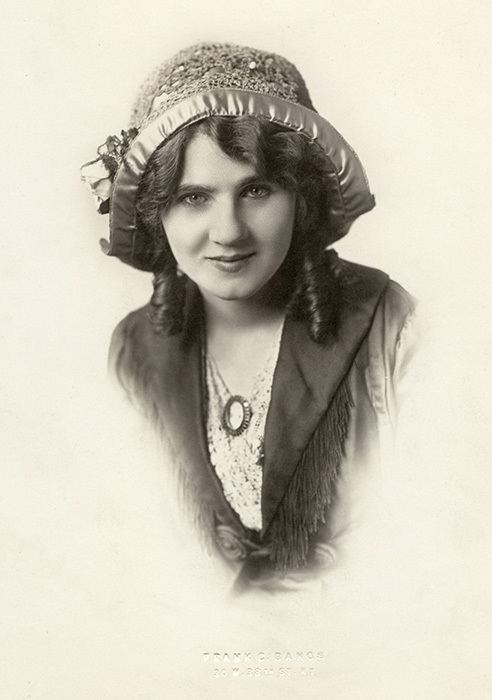
- Industry
Forgotten Hollywood: Florence Lawrence, Hollywood’s First Movie Star
Outside of cinema historians and movie aficionados, the name Florence Lawrence is not likely to ring a bell, although she was in over 300 films, was considered Hollywood’s first movie star, and was known as “the Girl of a Thousand Faces.”
Florence Annie Bridgwood was born in Hamilton, Ontario, Canada on January 2, 1886. Her mother, whose stage name was Lotta Lawrence, toured the vaudeville circuit taking little Florence along with her. Her mother’s profession would soon influence and shape her destiny. At the age of three, she was billed as “Baby Flo-The Child Wonder Whistler,” and as she grew older she performed in musicals and plays, whistling and playing the violin all under the guidance and management of her mother.
But in 1907, the company was disbanded. With the name and reputation, she had built for herself, at the age of 20 she was cast in the Edison production of Daniel Boone which then led to work at Vitagraph studios where she did one-reel Shakespeare films, The Taming of the Shrew, Macbeth, Romeo and Juliet and many more all for a salary of $15 a week. She also painted the background scenery. Biograph hired her and upped her salary to $25 a week. It was there that she worked with D.W. Griffith and honed her craft, and it was there that she worked in comedies. But she left Biograph in search of more challenging work. That move backfired and she was blacklisted by all non-independent production houses. It was in 1909 that Carl Laemmle formed his production company and signed Florence to a $1,000 a week exclusive contract as a featured player.
Although she had appeared in numerous films, her name was not known to her many fans. All her fan mail would go directly to the production houses and she was simply known as “The Biograph Girl.” The production companies kept her name a secret as they did all other actors who worked for them. They received no screen credit. The reason behind this was that fame would embolden the actors to demand more money.
But Carl Laemmle was so taken with Florence that he dubbed her “the greatest moving-picture actress in the world.” It was Laemmle who planned the first publicity stunt to promote Florence and the film starring her that he was about to release. He started the rumor that the Biograph Girl was killed by a streetcar in New York City, and the gossip spread like wildfire. Then Laemmle placed an ad in the newspapers stating “We nail a lie.” It was a clever ad and he ran it with a headshot of Florence with a quote from Laemmle himself denouncing the “silliest lie yet” that was circulated by his studio’s enemies. Miss Lawrence was alive and well, he said and was making his film The Broken Oath.
At the St. Louis, Missouri opening of the film, throngs of fan appeared to catch a glimpse of Ms. Lawrence, grabbing at her, ripping off the buttons of her coat and the feathers on her hat. It was a frenzy, one that Laemmle had carefully orchestrated and it paid off. Then and there, on the streets of St. Louis, a star was born. She was the most famous movie star of the silent era. It was rumored that her mailman suffered a nervous breakdown from hauling all her bags of fan mail, a rumor most certainly started by Laemmle.
Besides her film work, Lawrence was an activist, a suffragette, and the first woman to form her own production company. But with a number of bad investments and with a troublesome injury that she had suffered on a set, she was in constant pain. She also suffered from a painful and incurable bone disease. And when talkies came about, she found herself without work. But studios were looking for day players and extras and they looked for those who had camera experience, so they employed those who worked in silent films, including Lawrence.
She moved into an apartment in what is now known as West Hollywood with Bod Brinlow, a studio worker and his sister. At 1 p.m. on December 28, 1938, Florence phoned the studio, where she was to work that afternoon, claiming that she was not feeling well. Later that afternoon, she ingested ant poison and cough syrup at her West Hollywood home. Medics were unable to save her and she died at 2:45 p.m. She was 52. A note was found at the home that she shared with Brinlow saying “Dear Bob, call Dr. Wilson. I am tired. Hope this works, goodbye my darling, they can’t cure me, so let it go at that. Lovingly, Florence. PS. You’ve all been swell guys. Everything is yours.”
She was buried in an unmarked grave at Hollywood Forever Cemetery. It would be 53 years before actor Roddy McDowall stepped up and paid for a headstone in 1991. She leaves behind a legacy that paved the way for the name recognition of performers today – the very first actor to receive screen credit.

